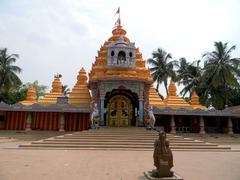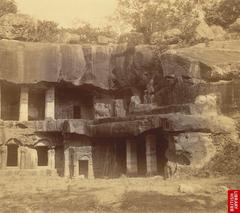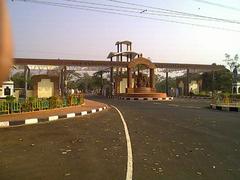
Chintamanisvara Siva Temple Bhubaneswar: Visiting Hours, Tickets, and Historical Significance
Date: 04/07/2025
Introduction
The Chintamanisvara Siva Temple, located in Bhubaneswar, Odisha, stands as a testament to India’s enduring spiritual and architectural heritage. Revered as “the Lord who removes worries,” this shrine is dedicated to Lord Shiva in his wish-fulfilling aspect as Chintamanisvara. Built between the 10th and 14th centuries CE by the Keshari (Somavamsi) dynasty, the temple is a marvel of the Kalinga architectural style, featuring the iconic rekha deula spire and intricate iconography. As one of the key highlights of Bhubaneswar—often called the “Temple City of India”—the temple draws devotees, history enthusiasts, and travelers eager to experience Odisha’s rich traditions and artistry (Indianetzone, Wikiwand, Orissa Guide).
Historical Background and Legends
Dating to the Keshari (Somavamsi) dynasty’s prolific temple-building era, the Chintamanisvara Siva Temple is intrinsically linked to the spiritual identity of Bhubaneswar (Indianetzone). According to local legend, the temple was constructed as an act of devotion to appease Lord Shiva, who is believed to grant relief from worries and fulfill the wishes of his devotees. Its location at the rear of Chintamanisvara Road, near the Cuttack–Puri road, situates it within Bhubaneswar’s sacred geography, alongside renowned temples like Lingaraj and Mukteshvara.
Architectural Features and Symbolism
Temple Layout
The temple follows a traditional Odishan layout, with a square sanctum (garbhagriha) and a west-facing orientation, which is uncommon among Hindu temples. The temple complex is enclosed by a modern compound wall, demarcating its sacred precinct (templesofindia.org).
Rekha Deula Style
The vimana (main shrine) exemplifies the rekha deula style—marked by a curvilinear spire rising above the sanctum. The vertical elevation is divided into three key sections:
- Bada (Base): Comprising the panchanga bada—five horizontal moldings (khura, kumbha, pata, kani, basanta)—symbolizing spiritual progression.
- Gandi (Body): The upward-curving spire, plain but elegant.
- Mastaka (Head): The crowning element, consisting of the beki (neck), amalaka (ribbed stone disc), khapuri (skull-shaped element), and kalasa (pot-shaped finial) (Wikiwand).
Iconography
Three raha niches on the temple exterior house:
- East: Kartikeya, holding a mace and cock.
- South: Ganesha, with rosary, sweet, goad, and broken tusk.
- North: Parvati, portrayed as nurturing and protective (templesofindia.org).
The doorjamb is adorned with khakhara mundis (pointed arch motifs) and the four-armed Ganesha, further reflecting the mature artistry of Kalinga traditions.
Religious Significance and Rituals
The temple is a living center of Shaiva worship, with daily pujas and abhishekas (ritual bathings of the lingam). Major festivals include:
- Maha Shivaratri: The grandest festival, featuring night-long vigils and special rituals.
- Siva Vivaha: The ceremonial marriage of Lord Shiva.
- Rudrabhisheka and Jalasaya: Important sacraments observed on auspicious days.
- Monthly Purnima Rituals: Special prayers on full moon nights (Hindupad).
During these events, the temple becomes a hub for devotional music, community feasts, and elaborate ceremonies, attracting pilgrims from across Odisha.
Visiting Hours, Entry Fee, and Etiquette
- Visiting Hours: Typically open from 5:00 AM to 9:00 PM daily; core worship hours are 6:00 AM to 8:00 PM (eOdisha).
- Entry Fee: There is no charge; voluntary donations are welcome.
- Dress Code: Modest clothing is required. Footwear must be removed before entering.
- Photography: Permitted outside; seek permission for photography inside the sanctum.
Accessibility and Travel Tips
- Location: Situated in Old Town Bhubaneswar, about 5 km from Biju Patnaik International Airport and 3 km from Bhubaneswar Railway Station (Wikipedia).
- Transport: Accessible by taxi, auto-rickshaw, or bus; parking is available nearby.
- Facilities: Restrooms, drinking water, prasad stalls, and shoe racks are available.
- Mobility: The temple has steps leading to the sanctum and limited wheelchair access; assistance is recommended for visitors with mobility challenges.
Festivals and Community Life
The temple is integral to Bhubaneswar’s cultural fabric, hosting:
- Maha Shivaratri: Featuring night-long rituals and cultural performances.
- Siva Vivaha and Purnima Celebrations: Marked by community gatherings, music, and distribution of prasad.
- Cultural Events: Classical dance and music performances, especially Odissi recitals, reinforce the temple’s role as a community hub.
Nearby Attractions
- Lingaraj Temple: The largest and most celebrated Shiva temple in Bhubaneswar.
- Mukteshvara Temple: Famed for its ornate gateway and sculptural beauty.
- Rajarani Temple: Known for its unique sandstone structure.
- Udayagiri and Khandagiri Caves: Ancient Jain rock-cut caves.
- Bindu Sagar Lake: A sacred waterbody surrounded by temples, ideal for a reflective stroll (Orissa Guide).
Practical Tips for Visitors
- Best Time to Visit: October to March for pleasant weather; attend during Maha Shivaratri for a vibrant spiritual experience.
- Duration: Allocate 30 minutes to an hour; longer during festivals.
- Responsible Tourism: Respect local customs, maintain silence during prayers, and avoid touching sacred objects.
Summary Table: Key Features
| Feature | Description |
|---|---|
| Orientation | West-facing |
| Vimana Style | Rekha deula |
| Key Deities | Shiva (lingam), Parvati, Ganesha, Kartikeya |
| Festivals | Maha Shivaratri, Siva Vivaha, Monthly Purnima |
| Entry Fee | Free (donations accepted) |
| Visiting Hours | 5:00 AM – 9:00 PM (core: 6:00 AM – 8:00 PM) |
| Accessibility | Steps to main sanctum; partial wheelchair access |
| Nearby Sites | Lingaraj Temple, Mukteshvara, Rajarani, Udayagiri/Khandagiri Caves |
Frequently Asked Questions (FAQ)
Q: What are the visiting hours for Chintamanisvara Siva Temple?
A: Daily from 5:00 AM to 9:00 PM; core hours are 6:00 AM to 8:00 PM.
Q: Is there an entry fee?
A: No, entry is free for all visitors.
Q: Are guided tours available?
A: Yes, local guides and tour operators offer temple circuits including Chintamanisvara.
Q: Is the temple wheelchair accessible?
A: The temple has steps and does not have dedicated ramps; assistance is available but access is limited.
Q: What are the main festivals?
A: Maha Shivaratri, Siva Vivaha, and monthly Purnima rituals.
Visual and Multimedia Suggestions
Enhance your visit with online virtual tours and maps, available through official tourism websites. High-quality images of the temple’s spire, sculptures, and festival celebrations can provide a deeper sense of its spiritual and aesthetic atmosphere.
Conclusion and Visitor Recommendations
The Chintamanisvara Siva Temple is an essential stop for anyone interested in Odisha’s spiritual legacy and architectural wonders. Its serene ambiance, historical importance, and vibrant festival life offer a multifaceted experience—whether you are a devotee, historian, or cultural traveler. For a richer journey, combine your visit with nearby temples and heritage sites in Bhubaneswar, and consider attending during festivals for an immersive encounter with Odisha’s living traditions.
For real-time updates, guided tours, and interactive guides, download the Audiala app and follow Bhubaneswar’s official tourism channels. Begin your exploration of the “Temple City of India” with the Chintamanisvara Siva Temple, and let its history and spirituality inspire your journey.
Sources and Further Reading
- Chintamanisvara Siva Temple Bhubaneswar: History, Visiting Hours, Tickets & Travel Guide, Indianetzone
- Chintamanisvara Siva Temple in Bhubaneswar, Wikiwand
- Chintamanisvara Siva Temple Bhubaneswar: Visiting Hours, Tickets, History, and Cultural Significance, Orissa Guide
- Chintamanisvara Siva Temple Visiting Hours, Tickets, and Travel Guide in Bhubaneswar, eOdisha
- Chintamanisvara Siva Temple Bhubaneswar: Architectural Features, Visiting Hours, and Guide, Temples of India Portal
- Chintamanisvara Siva Temple Festivals and Rituals, Hindupad









